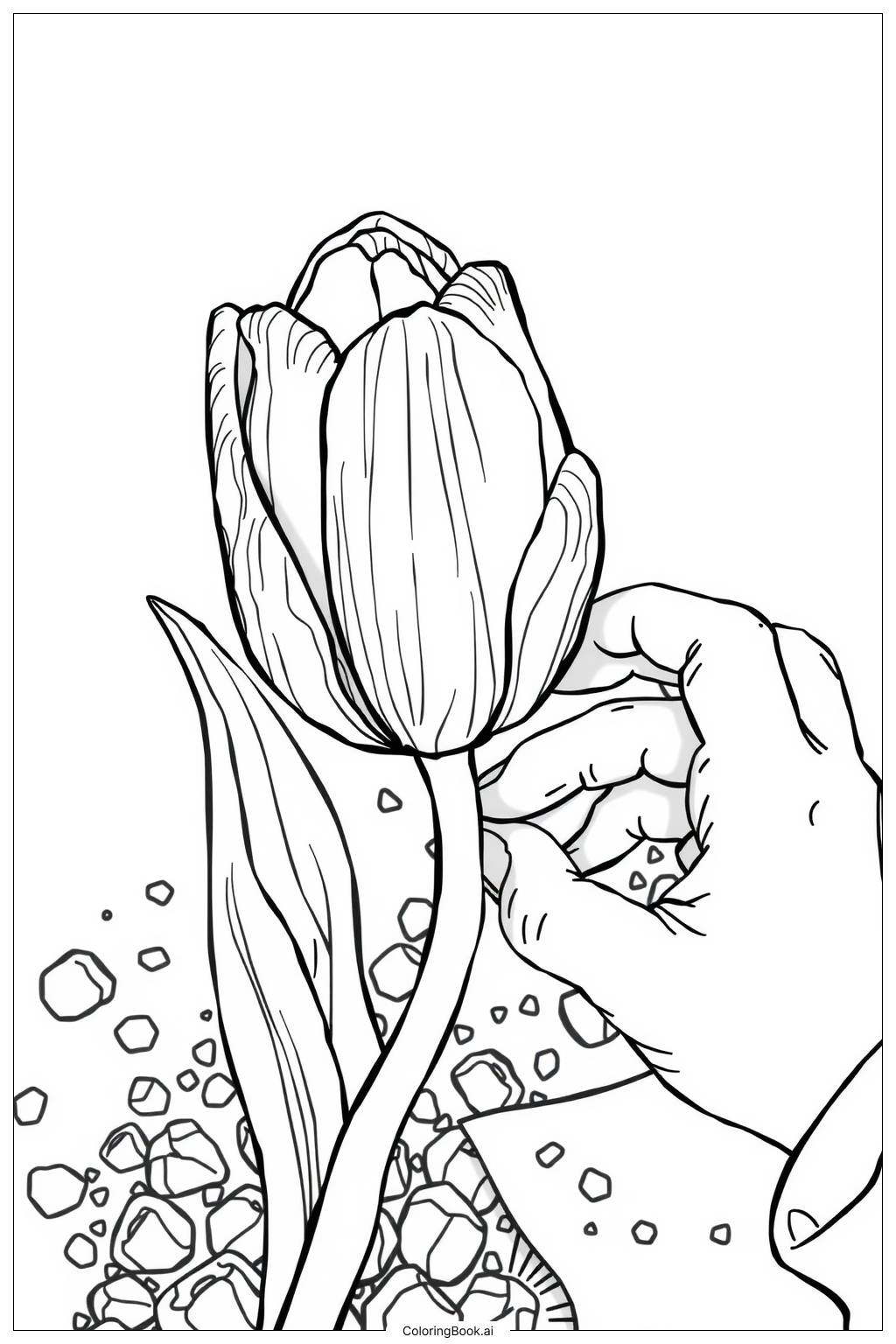Coloring tips: How to color Tulip in a Child's Hand Planting coloring page well?
For coloring the tulip, use vibrant colors like red, pink, or yellow for the petals. A soft green can be used for the stem and leaves to give a natural look. Try blending colors for the petals to make them look more realistic. Add some different shades of brown for the pebbles around to create depth. You can also use a light blue for the background to represent the sky. Don't be afraid to experiment with colors!
Coloring challenges: Which parts are difficult to color and need attention for Tulip in a Child's Hand Planting coloring page?
1. **Petal Details**: The tulip's petals have intricate shapes and lines. Coloring them can be tricky because you want to stay within the lines but also show the natural curves of the flower. 2. **Shading**: Creating depth requires careful shading. It's challenging to blend colors properly, especially in small areas. 3. **Pebble Textures**: The pebbles need different shades to look realistic. It might be hard to decide which colors to use for each pebble. 4. **Hand Positioning**: The child’s hand is grasping the stem. Coloring it correctly requires attention to shadows and highlights, which can be tough for some. 5. **Color Choices**: Kids might struggle with choosing the right colors to make the tulip lively and vibrant. They might feel overwhelmed by options.
Benefits of coloring books: Advantages of drawing Tulip in a Child's Hand Planting coloring page
Coloring this image allows children to express their creativity. It helps develop fine motor skills as they control the coloring tools. Choosing colors teaches decision-making and color recognition. Engaging in this activity can also increase focus and concentration. Additionally, it brings relaxation and can be a fun way to learn about gardening and nature. Kids can feel proud of their finished artwork, boosting their self-esteem.
